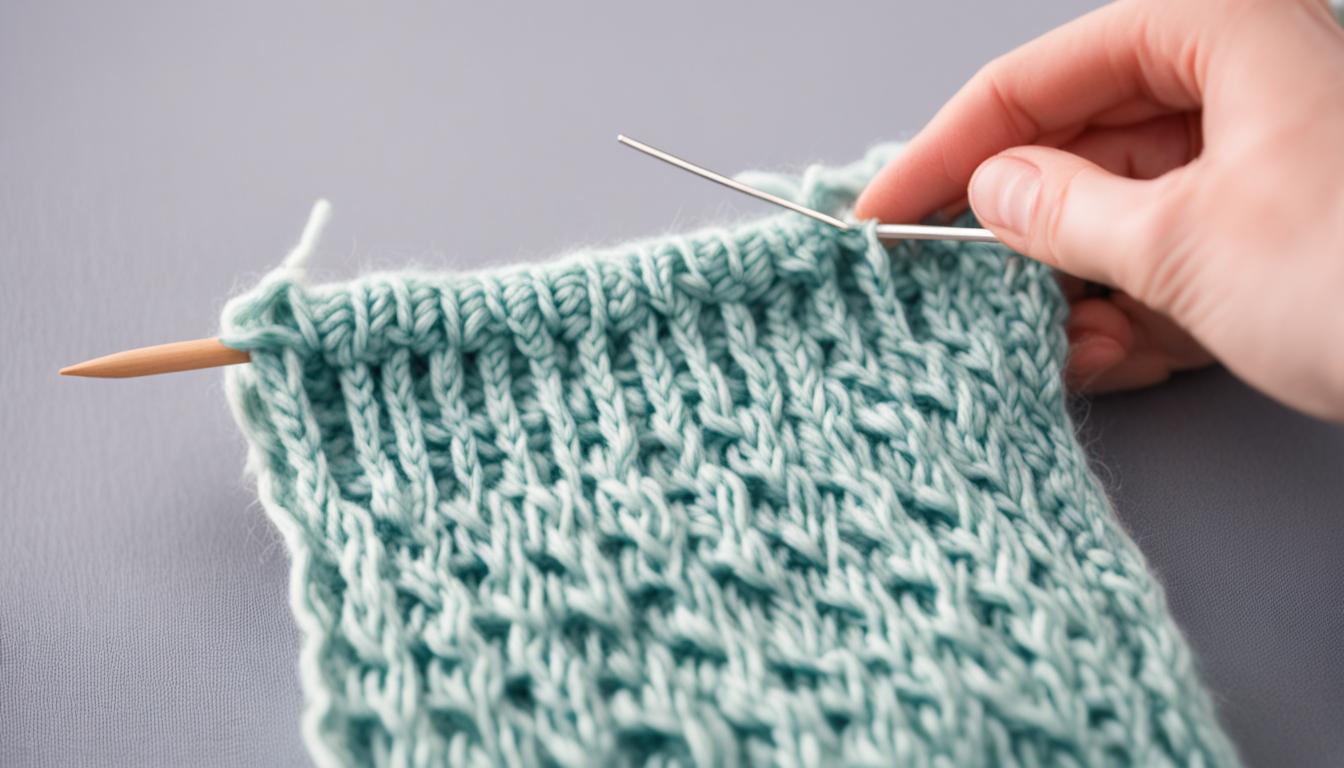Learning how to cast off knitting is a crucial step in finishing knitting projects. This process, also known as binding off, ensures that your stitches are secure and prevents them from unraveling. There are various techniques and methods for casting off knitting, and in this article, we will explore them in detail.
What is Casting Off in Knitting?
Casting off in knitting is the process of creating an end to your work by securing the stitches. It is the final step in finishing a knitting project. The cast-off edge provides a neat and tidy finish to your work and ensures that the stitches do not unravel. In the United Kingdom, this process is often referred to as “casting off.” It is an essential skill for knitters of all levels and is used in various knitting projects.
When you cast off in knitting, you create a finished edge that is structurally stable and visually appealing. This edge is achieved by systematically working your stitches and releasing them from the needles. The cast-off edge prevents the stitches from unraveling and adds a professional touch to your knitting projects.
Whether you’re working on a cozy scarf, a delicate sweater, or a trendy hat, casting off is a crucial step in finalizing your knitting. It gives your project a polished look and ensures that all your hard work pays off. By following the proper techniques and practicing regularly, you’ll master the art of casting off and be able to complete your knitting projects with confidence. There is also another process or method called cast on knitting.
How to Cast Off Knitting Easily?
To cast off knitting, follow these simple steps:
- Step 1: For beginners, start by knitting two stitches.
- Step 2: Take the first stitch on the right needle and pass it over the second stitch and off the needle. This creates one cast-off stitch.
- Step 3: Knit the next stitch on the left needle.
- Step 4: Repeat steps 2 and 3 until only one stitch remains on the right needle.
- Step 5: Cut the yarn, leaving a tail that is long enough to weave in later.
- Step 6: Thread the tail through the last stitch and pull tight to secure.
- Step 7: Weave in the loose ends with a tapestry needle to finish.
When casting off knitting with two needles, use the same steps as above, but with the stitches divided between the two needles.
If you are casting off knitting in the purl stitch, follow the same steps but substitute knitting with purling.
Casting Off in the Round
Casting off knitting in the round is slightly different. Here are the steps:
- Step 1: Knit the first two stitches together.
- Step 2: Slip the resulting stitch back onto the left needle.
- Step 3: Repeat steps 1 and 2 until only one stitch remains on the right needle.
- Step 4: Cut the yarn, leaving a tail to weave in later.
- Step 5: Thread the tail through the last stitch and pull tight to secure.
Now you know how to cast off knitting using various techniques. Practice these steps to achieve neat and professional finishes to your knitting projects.
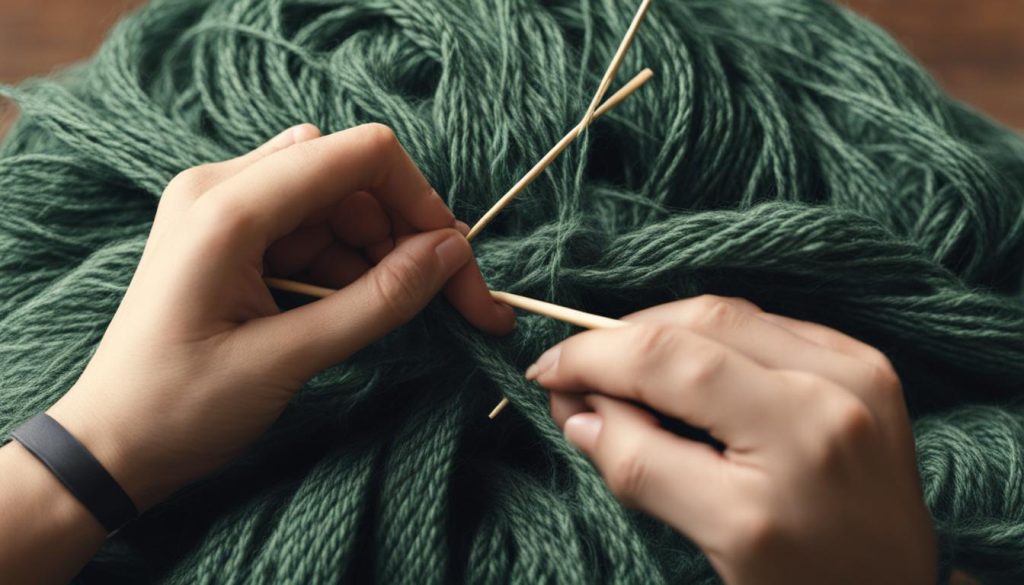
Tips for Casting Off Knitting
To ensure neat and secure edges when casting off knitting, consider the following tips:
- Use a needle one or two sizes larger than the one you used for knitting. This will create a looser cast off, preventing tight edges and making it easier to work with the stitches.
- Pay attention to your tension. Make sure you maintain an even tension while casting off to avoid tight or loose stitches. Consistent tension will result in a uniform and professional-looking edge.
- Try different cast off methods. Experiment with various knitting bind off techniques to find the one that gives you the desired edge finish. Some methods, such as the sewn bind off or the picot bind off, can add decorative elements to your knitting.
- Use stitch markers. Placing stitch markers at regular intervals along your cast off row will help you keep track of your progress and ensure that you don’t accidentally skip or add stitches.
- Practice with scrap yarn. If you’re unsure about a cast off technique or want to perfect your tension, practice on a small swatch or scrap yarn before casting off your actual project.
- Block your finished project. After casting off, block your knitting to relax the stitches and even out the edges. This will give your project a polished look and help secure the cast off stitches.
By following these tips, you can achieve secure knitting edges and create beautiful cast off finishes for your knitting projects.
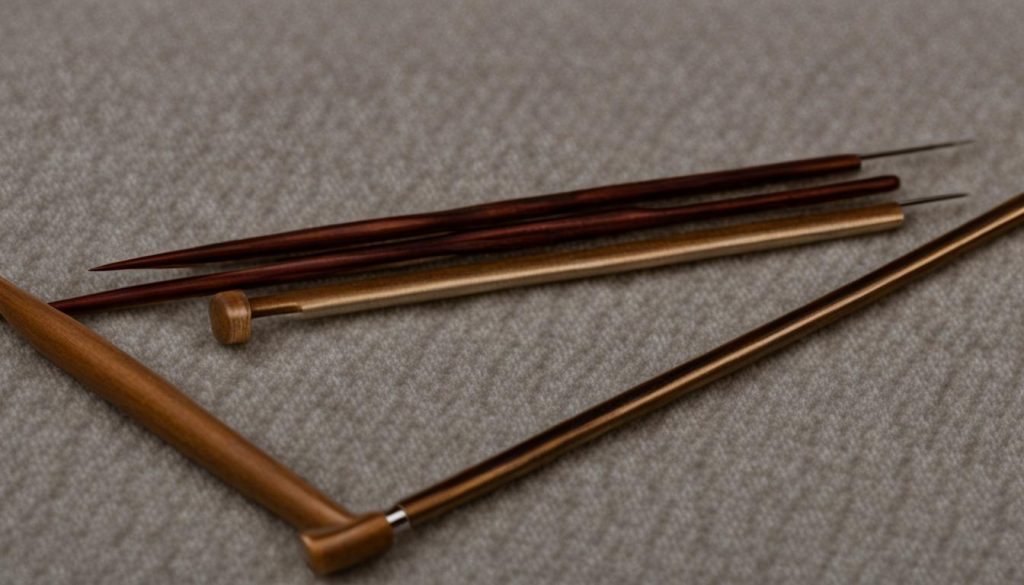
| Tip | Description |
|---|---|
| Use a larger needle | Using a needle size larger than your knitting needle can create a looser cast off and prevent tight edges. |
| Maintain even tension | Keep your tension consistent while casting off to ensure a uniform and professional-looking edge. |
| Experiment with techniques | Try different cast off methods to achieve the desired edge finish and explore decorative options. |
| Use stitch markers | Place stitch markers along your cast off row to keep track of stitches and prevent mistakes. |
| Practice with scrap yarn | Practice cast off techniques on scrap yarn before working on your actual project to build confidence and ensure correct tension. |
| Block your project | After casting off, block your finished project to relax the stitches and create a polished look. |
Different Cast Off Techniques
There are several cast off techniques that you can use to achieve different effects in your knitting projects. Different bind off methods create varying levels of stretchiness, texture, and decorative edges. Here are some common cast off techniques:
1. Standard Bind Off
The standard bind off method is a basic technique used to create a secure edge on your knitting project. It is simple and versatile, making it suitable for a wide range of projects.
2. Stretchy Bind Off
The stretchy bind off method is ideal for projects that require a flexible and elastic edge, such as socks and garments. It allows for comfortable movement and prevents the edge from becoming too tight.
3. Picot Bind Off
The picot bind off method adds a decorative touch to your knitting project. It creates a row of small loops along the edge, giving it a delicate and feminine look. This technique is often used in lace knitting and baby garments.
4. I-Cord Bind Off
The I-cord bind off method creates a smooth and rounded edge. It involves creating a small cord-like strip of knitting and attaching it to the edge of your project as you bind off. This technique is commonly used in projects that require a polished finish, such as scarves and blankets.
5. Tubular Bind Off
The tubular bind off method is used to create a neat and invisible edge on knit fabrics. It mimics the appearance of a seamless, tubular fabric and is often used in projects where the edge needs to be completely hidden, such as cuffs and hems.
6. Lace Bind Off
The lace bind off method is used to create a decorative edge with intricate lace patterns. It involves knitting or purling together stitches in specific ways to create eyelets and motifs. This technique is commonly used in lace shawls and delicate accessories.
These are just a few of the many cast off techniques available to knitters. Each method offers its own unique qualities and can enhance the overall look and feel of your knitting project. Experiment with different techniques to find the perfect bind off method for each of your knitting creations.
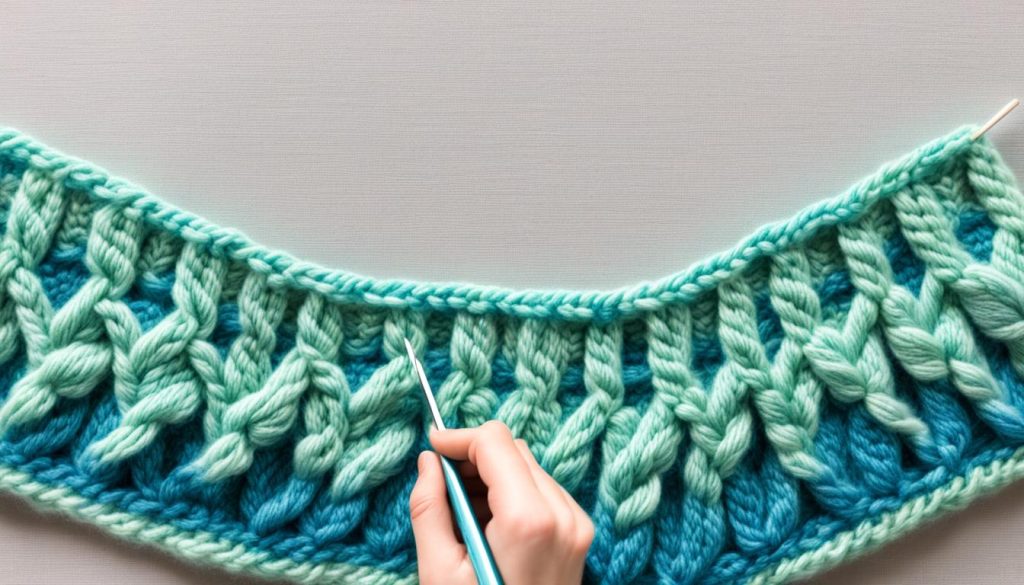
Essential Tools for Casting Off Knitting
When casting off knitting, you will need a few essential tools to complete the process successfully. These tools include:
- Knitting needles: Ensure you have the appropriate size knitting needles for your project. The size of the needles will depend on the yarn weight and gauge specified in your pattern.
- Yarn: Choose a yarn that complements your knitting project. The weight and fiber content of the yarn will affect the drape and appearance of the finished piece.
- Tapestry needle: A tapestry needle is used for weaving in loose ends and sewing seams. It is an essential tool for finishing your knitting project.
- Scissors: A pair of sharp scissors is necessary for cutting the yarn. Make sure they are small and handy for precision cutting.
- Stitch markers: Stitch markers help identify specific stitches or sections in your knitting. They can be helpful when counting stitches during the cast-off process.
Having these tools on hand will make casting off knitting a smooth and enjoyable experience. Now let’s move onto the next section and explore how to prepare for your cast-off.
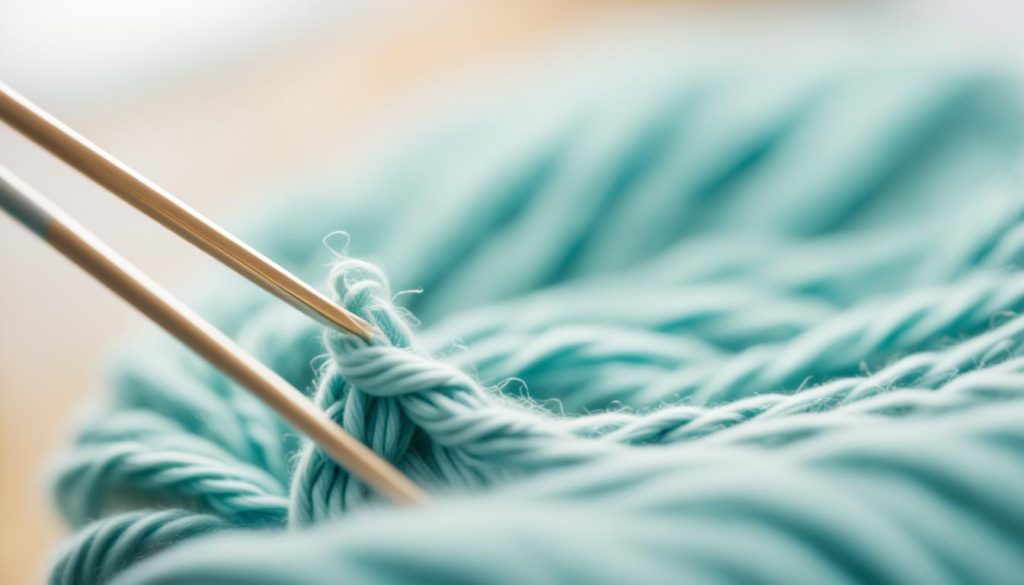
Preparing for Your Cast Off
Before you can bind off in knitting, it’s important to ensure that you have completed your knitting project up to the desired length. Take a moment to double-check that all your stitches are on the needles and ready to be cast off.
To make the cast off process smoother, it can be helpful to review the specific pattern instructions for casting off. Keep in mind that different patterns may have variations in the cast off technique, so familiarize yourself with the guidelines before proceeding.
Once you are prepared and confident in your knitting progress, you can proceed with the cast off process.
Ensure that your project aligns with your desired outcome before proceeding with the cast off technique. Once you’re satisfied, you can confidently bind off and complete your knitting project with a neat and tidy finish.
Conclusion
Casting off knitting is an essential skill that every knitter should master. It is the final step in finalizing knitting projects and ensures a polished and secure finish. By following the steps and techniques outlined in this article, you can confidently cast off your knitting projects and achieve professional-looking results.
With practice, you will become skilled in creating neat and tidy edges, adding a touch of sophistication to your finished knitting projects. Whether you’re knitting a sweater, a scarf, or a cozy blanket, a well-executed cast off will make your work stand out.
So, remember to take your time and pay attention to the details when casting off. With a little patience, you’ll be able to secure your stitches, prevent unraveling, and create beautiful, completed pieces. Happy knitting!
FAQs
How do you secure knitting edges when casting off?
To ensure neat and secure edges when casting off knitting, you can consider the following tips: 1) Maintain an even tension while knitting. 2) Use a larger needle size for the cast-off row. 3) Avoid binding off too tightly. 4) Block your finished knitting project to encourage the stitches to sit evenly.
How do you prepare for casting off in knitting?
Before casting off knitting, make sure you have completed your project up to the desired length. Ensure all stitches are on the needles and ready to be cast off. Review the specific pattern instructions for any variations in the cast off technique.
What is the purpose of casting off in knitting?
Casting off in knitting provides a polished and secure finish to your projects. It ensures that the stitches do not unravel and gives your knitting a neat and tidy appearance.

